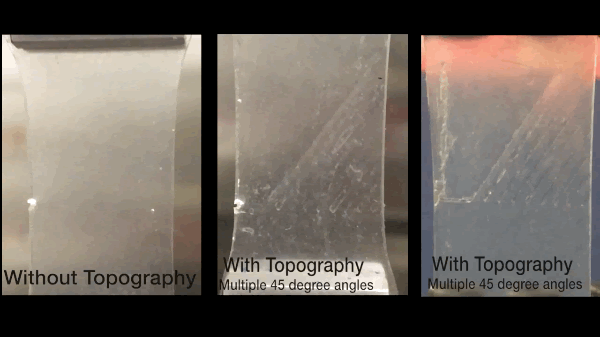Embedded channels influence fracture path in soft materials
Representative video showing altered fracture paths in 20 mm wide polydimethylsiloxane (PDMS) membranes containing no embedded channels (left) or 11 and nine embedded channels (middle and right, respectively). From left to right, the final fractures are displaced approximately 0 mm, 7 mm, and 12 mm from the original longitudinal position. Credit: Scientific Reports
Nature knows how to fail, and Binghamton University researcher Christopher Maiorana is determined to replicate it. In a recent Scientific Reports article, Maiorana and his co-authors describe a method for guiding fractures in soft materials based on principles observed in skin, bone, and seashells. “If you’re going to fail,” says Maiorana “do it in a controlled way.”
Read the full write-up on MRS Bulletin.
Read the Scientific Reports article.



